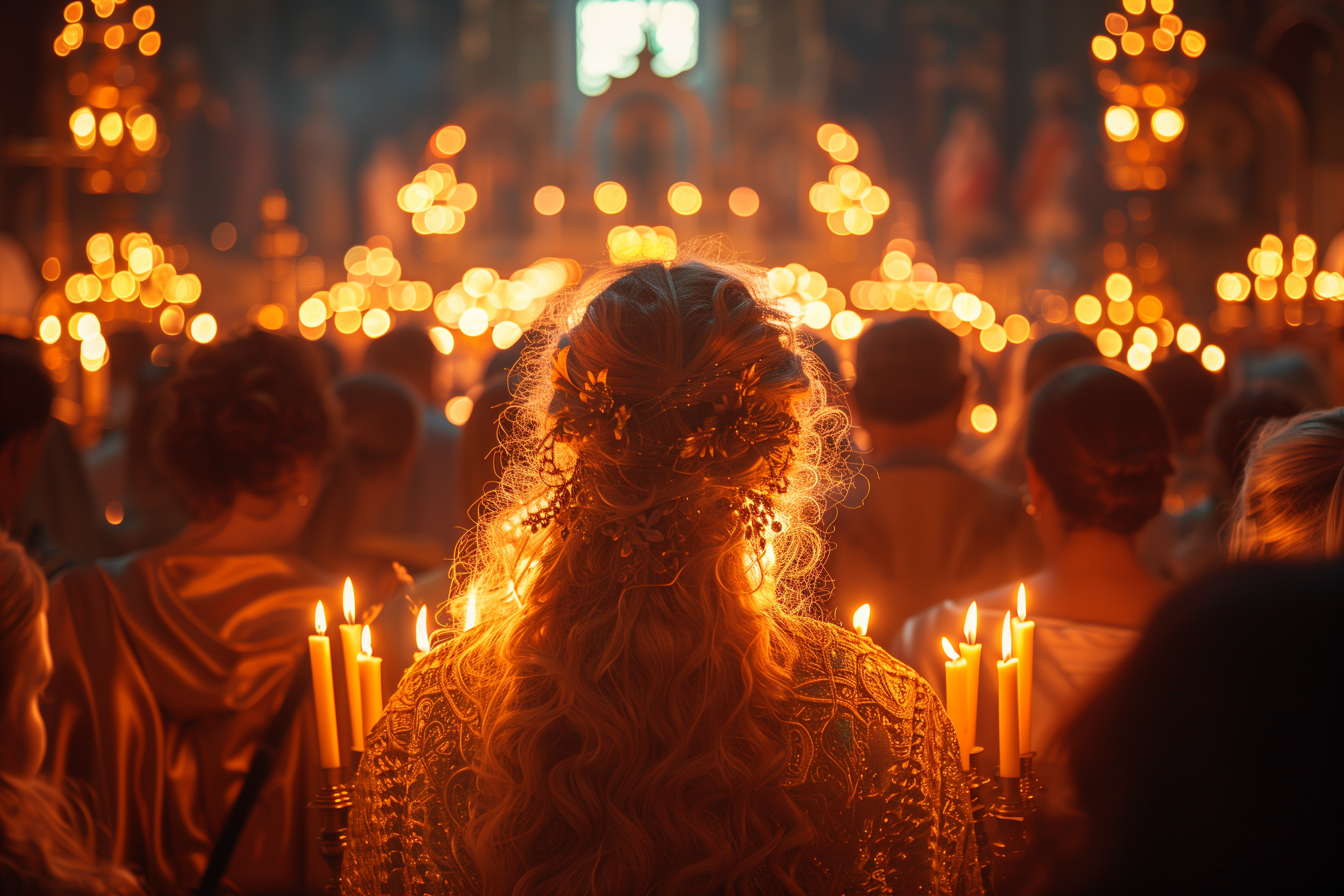Easter, known as "Paștele" in Romania, is a time of great joy and reverence, celebrated with a mix of religious solemnity and festive customs. The night of "Inviere," which means Resurrection, is one of the most important events in the Romanian Orthodox Christian calendar. It marks the resurrection of Jesus Christ and is observed with midnight services, prayers, and a host of unique traditions.
The Holy Light from Jerusalem
The Holy Light, or "Sfânta Lumină," is a sacred flame that is brought to Romania from Jerusalem. This flame originates from the Church of the Holy Sepulchre, where it is believed to miraculously appear each year during Easter. The Holy Light symbolizes Jesus' resurrection and the triumph of light over darkness.

On Holy Saturday, the day before Easter, the Holy Light is flown into Romania. High-ranking church officials and dignitaries gather to receive it at the airport, often accompanied by a grand ceremony. Once in Romania, the light is distributed to churches across the country, where it is used to light candles during the midnight service. The Holy Light has a unique property in that it is considered to be "saintly" and does not burn, a characteristic seen as a sign of its divine nature.
The Midnight Service
The midnight service, or "slujba de Înviere," is a solemn yet joyful ceremony. Worshipers gather in churches and cathedrals, where the service begins with the reading of the Gospel and a sermon. The church is darkened, and at midnight, the priest emerges with a candle lit from the Holy Light. The priest then shares this flame with the congregation, and soon, the entire church is illuminated by the glow of countless candles.

This ceremony symbolizes the resurrection of Jesus and the spreading of his light to the world. As the congregation lights their candles, they sing hymns celebrating the resurrection. One of the most beloved hymns is "Christ is Risen" ("Hristos a înviat"), which is sung repeatedly during the service.
The Night of Inviere Traditions
Following the midnight service, many families take the Holy Light home. In some regions, they light candles from the Holy Light and place them in windows or around their homes to bless them and protect them from evil. The Holy Light is seen as a powerful symbol of God's presence and protection.

Another unique Romanian tradition during the night of Inviere is the cracking of red-painted eggs, a practice known as "ciocnitul ouălor." Family members and friends crack their eggs against one another, with one person saying, "Christ has risen!" and the other responding, "Indeed, He has risen!" This custom symbolizes the breaking of the tomb and the resurrection of Christ. The red color of the eggs represents the blood of Christ, while the act of cracking the eggs signifies new life and rebirth.

In many rural communities, the night of Inviere is also a time for social gatherings. After the midnight service, villagers may come together to share a festive meal. Traditional Romanian Easter foods include lamb, symbolizing Christ as the Lamb of God, as well as various pastries and cakes, such as "cozonac" (a sweet bread) and "pasca" (a cheese-filled bread).



The Extended Easter Celebrations
In the Romanian Orthodox tradition, Easter is not just a single day but a period of celebration that extends over several days. The Monday after Easter, known as "Lunea Albă" (White Monday), and the Tuesday after, known as "Marțea Albă" (White Tuesday), are also part of the Easter celebrations. During these days, families visit each other, share meals, and continue the joyous festivities.


In some regions, the second day of Easter is marked by "Stropitul," a tradition where young men sprinkle water on young women to symbolize freshness and vitality. This custom is especially prevalent in Transylvania and is thought to have pagan roots related to spring fertility rituals.
The Cultural Significance of Easter in Romania
Easter in Romania is not only a religious holiday but also a time of cultural significance. The traditions surrounding Easter reflect the country's rich heritage and strong sense of community. For many Romanians, Easter is a time to reconnect with family and friends, reaffirm their faith, and celebrate the promise of renewal and hope.
The emphasis on community is evident in the way Romanians celebrate Easter. The midnight service and the sharing of the Holy Light bring people together in a shared experience of faith and joy. The festive meals, the cracking of eggs, and the visiting of family and friends all reinforce the importance of togetherness and love.

In addition to its religious and cultural significance, Easter in Romania also has a strong culinary tradition. The festive meals served during Easter often feature dishes that are symbolic and deeply rooted in Romanian culture. For example, lamb is a traditional Easter dish, symbolizing Christ as the Lamb of God. Other traditional dishes include "drob," a type of meatloaf made with lamb organs, and "ciorbă de miel," a lamb soup. These dishes, along with the sweet breads and pastries, are an integral part of the Easter celebrations.


Easter in Romania is a time of deep faith, joyous celebration, and rich traditions. The night of Inviere, with its unique customs and ceremonies, is a testament to the country's strong religious heritage and vibrant culture. From the midnight service and the Holy Light to the festive meals and community gatherings, Easter in Romania is a celebration that brings people together and fills their hearts with joy and hope.

